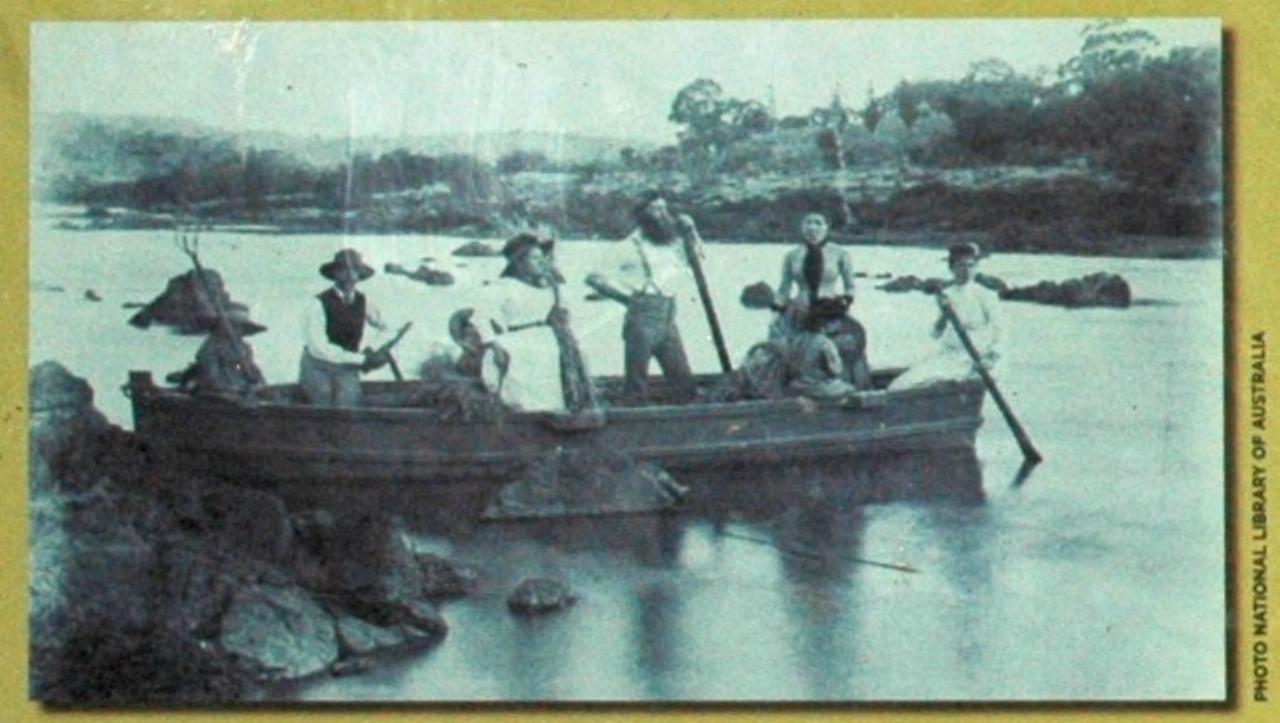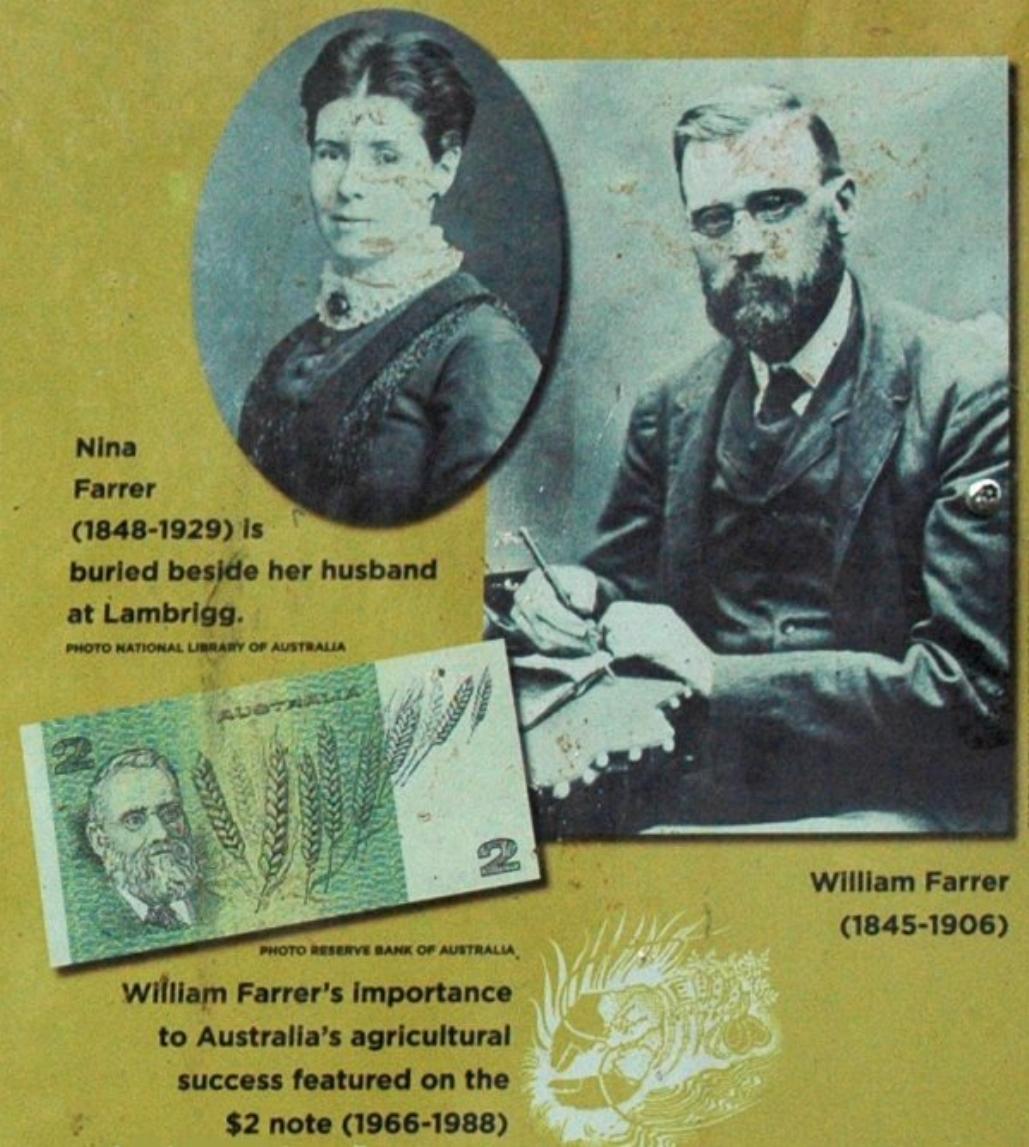
The following information is contained on the display board at the lookout.
The Murrumbidgee River below marks the boundary of the property Lambrigg, formerly owned by agricultural scientist William Farrer.
In 1882, English immigrant Farrer married Nina de Salis, daughter of NSW parliamentarian Leopold Fane de Salis. As a wedding present, Leopold gave the couple 240 acres along the Murrumbidgee, bordering his own land at Cuppacumbalong. Farrer chose the name Lambrigg ('hill of lambs') in memory of his mother's English village.

Nina Farrer (1848 - 1929) holds a wheatsheaf as members of the de Salis
and Smith families prepare to cross the Murrumbidgee River, about 1895.
Farrer used Lambrigg as an open-air laboratory aiming to breed a wheat resistant to fungal disease and drought. He recorded hundreds of experiments - each requiring painstaking care to pollinate tiny wheat flowers by hand - in his precious field notebook. Farrer's dedication was intense - he even chose to stay in Australia rather than return to England to inherit a family fortune.
In 1897, Farrer finally cross-bred a high-yielding and drought-resistant strain. It was released in 1901 as Federation wheat. This strain, and others Farrer developed, let wheat farming extend into Australia's drier west, and made Australia a major wheat exporter. Within twenty years, Farrer's research had changed wheat-growing throughout the world.
Sadly, Farrer knew little of his success. He died in 1906, and was buried on a hill at Lambrigg overlooking his beloved wheat crops and the Murrumbidgee.
